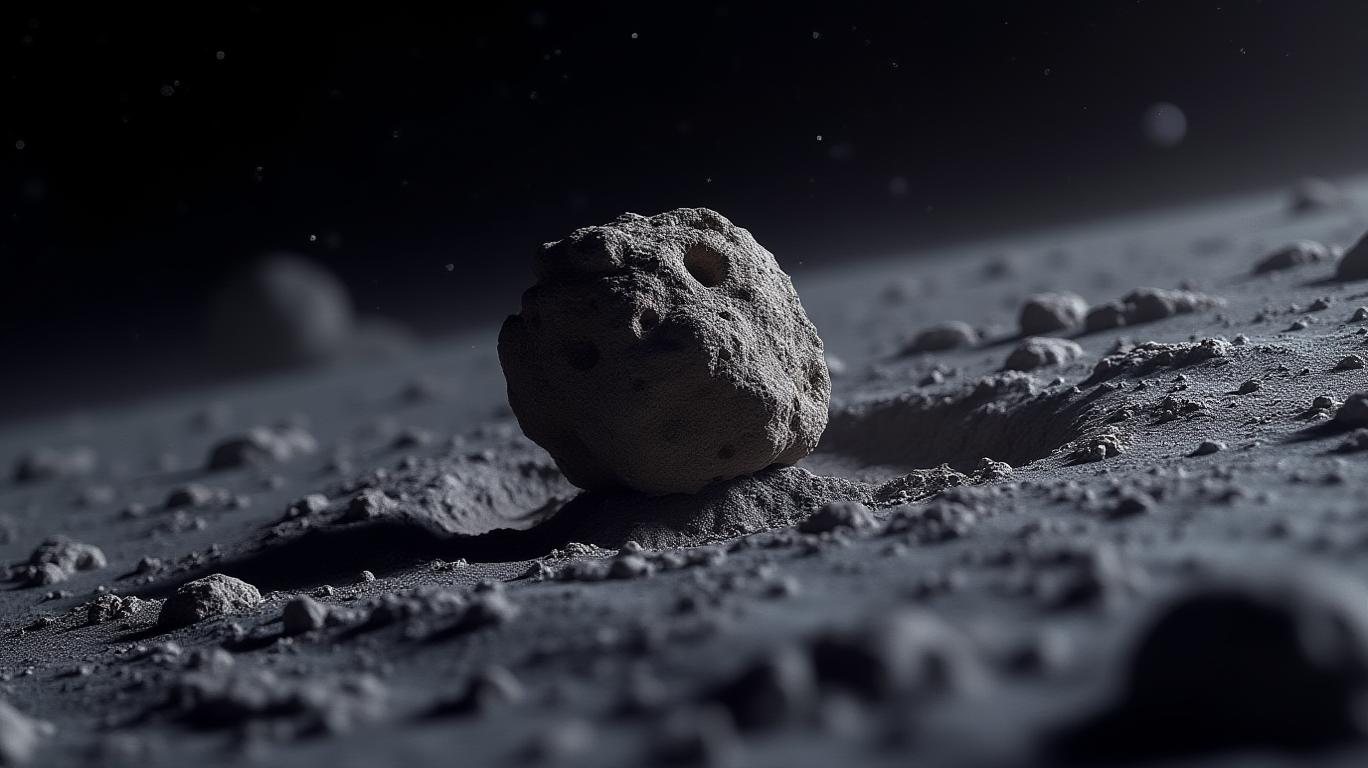China's Tianwen-2 Mission: The Launchpad to Dominance in Deep-Space Technology and Resource Wealth
The cosmos is about to yield its secrets—and the companies that master its frontiers will reap untold riches. China’s Tianwen-2 mission, set for launch in May 2025, is not merely a scientific endeavor. It is a bold claim for global leadership in deep-space exploration, unlocking a treasure trove of opportunities in asteroid mining, advanced materials, and autonomous robotics. For investors, this is the moment to position for the next trillion-dollar industry: the space economy.

Sample-Return Innovation: A Blueprint for Commercializing Space Resources
The crown jewel of Tianwen-2 is its dual-sampling technology, combining NASA-style “touch-and-go” collection with a groundbreaking “anchor-and-attach” system. While the former has been proven by missions like Hayabusa2, the latter represents a leap forward: drilling into an asteroid’s surface to secure samples under microgravity conditions. This capability isn’t just scientific—it’s commercial gold.
Asteroids like Kamoʻoalewa are estimated to hold trillions of dollars in resources, including rare earth metals, platinum-group elements, and water ice. Tianwen-2’s success validates China’s ability to retrieve and analyze these materials, directly addressing the technical hurdles for asteroid mining. For investors, firms specializing in advanced robotics (e.g., robotic arms, autonomous drilling systems) and space resource extraction will see exponential demand as missions scale.
Comet Rendezvous: A Strategic Move to Map the Solar System’s ‘Bank Account’
While the asteroid phase grabs headlines, Tianwen-2’s comet encounter with 311P/PANSTARRS is equally transformative. Comets are cosmic time capsules, preserving primordial materials from the solar system’s birth. By studying their volatile compounds and organic molecules, scientists can map resource distribution across the asteroid belt—a region ripe for future mining operations.
This phase also underscores China’s ambition to dominate interplanetary logistics. The mission’s use of Earth’s gravity to slingshot toward 311P reduces fuel costs, a model that could revolutionize deep-space travel. For investors, companies developing solar electric propulsion systems and deep-space navigation software are primed to supply the infrastructure for a booming asteroid economy.
CASC’s Technological Leadership: The Engine of China’s Space Dominance
Behind Tianwen-2 stands the China Aerospace Science and Technology Corporation (CASC), the unsung giant of the mission. CASC’s integration of lunar reentry expertise (from Chang’e-5) with cutting-edge autonomous systems has made this mission possible. Its success signals that CASC is now a peer to SpaceX and Blue Origin in mastering high-speed reentry and autonomous planetary exploration.
CASC’s role in Tianwen-2 also hints at its broader strategy: leveraging government missions to refine technologies for commercialization. Investors should watch for spin-offs in advanced materials (e.g., heat-resistant composites for reentry vehicles) and robotics (e.g., the anchor-and-attach system’s applications in satellite servicing).
The Tianwen Roadmap: A Decade of Market Control
Tianwen-2 is just one step in China’s ambitious deep-space program. The Tianwen series—stretching to Mars sample returns (Tianwen-3) and a Jupiter mission (Tianwen-4)—lays out a clear path to technological supremacy. By 2034, when Tianwen-2 reaches 311P, China will have spent a decade refining the systems needed to dominate the space economy.
This is not just about science. It’s about controlling the supply chain of off-world resources and technologies. Just as oil wealth reshaped the 20th century, asteroid resources could define the next. Companies aligned with CASC’s ecosystem—or competing in adjacent sectors like space logistics and in-situ resource utilization—will be the winners.
Investment Imperatives: Act Now or Be Left Behind
The window for investment is narrowing. Tianwen-2’s success will validate China’s leadership, triggering a global rush to partner with its tech ecosystem. Investors must act swiftly to secure stakes in:
- Advanced robotics firms with asteroid-mining patents.
- Material science companies developing lightweight, heat-resistant composites.
- Space logistics startups specializing in interplanetary navigation software.
- CASC-linked ventures or international partners (e.g., Russia’s particle detector collaboration) leveraging the mission’s data.
Conclusion: The Next Gold Rush is Already Underway
The Tianwen-2 mission is a masterstroke. It turns China’s deep-space ambitions into a commercial reality, positioning CASC as the world’s go-to partner for next-gen space tech. The asteroid belt is not just a scientific frontier—it’s a resource-rich market waiting for exploitation.
For investors, the message is clear: act now. The companies that align with China’s space roadmap will be the titans of the 2030s. Those who delay risk missing the launch window to the next trillion-dollar economy. The cosmos is calling—and the next era of wealth belongs to those bold enough to answer.
The stars are not distant—they’re a business plan.

Comments
No comments yet